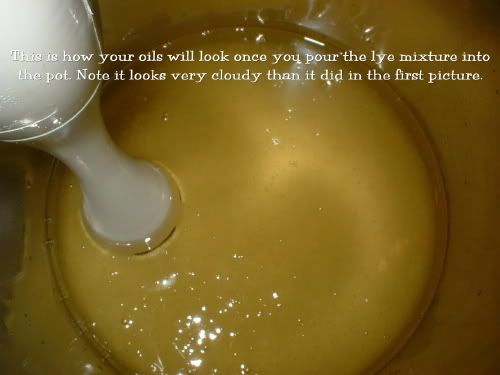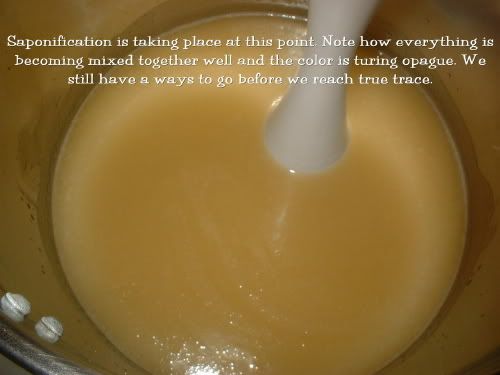I like to use lots of additives to my soap for visual appeal. Exfoliation etc. Many popular ones are cornmeal, poppy seeds, oatmeal, calendula flowers, strawberry seed etc.
I also like to add a tablespoon of goat’s milk powder or buttermilk powder for a milk based soap to the base oils. Stick blend it in well if you decide to go this route.
Honey is also a good additive as well.
You don’t need to add any additives for your first batch. Learn the basics first then you can experiment.
Oils and Butters
Soap can be made with a variety of oils and butters. Many of which you can find in your grocery store. I like to make soaps with Olive oil, coconut oil, palm oil, castor oil, Shea butter, cocoa butter, wheat germ oil, avocado oil, lard etc. Each oil has its own properties and characteristics.
For example Shea butter is very moisturizing, Olive oil is moisturizing as well and really is a neutral oil as it helps bring out the characteristics of your other oils. Coconut oil can produce a lot of bubbles in soap. It can also make your skin dry and itchy if you use more than 35% of it in any recipe. Each given oil is assigned to a SAP value or number. All that means is that there is a certain amount of lye that is needed to turn that oil into soap. You can do calculations to determine the sap value of all your oils in your recipe and that gives you the amount of lye and water you will need to use in your recipe to turn the mixture into soap. Sounds fun ehh. There are a few formulas to figure all that out by hand but I will just give you a simple recipe that I formulated to get your started with something simple.
Lye aka as Sodium Hydroxide
Lye is getting terribly hard to find these days due to many people starting illegal meth labs. Red Devil lye used to be found in the grocery stores but it was pulled a year ago. Lye can be purchased over the internet but you will almost always have to sign a hazmat waiver before it can be shipped out to you. My best advice to you is to simply go to your local Lowes and purchase it there. It is found in the section where you have the drain cleaners and it’s made by roebic. It’s called crystal drain cleaner. Okay don’t freak out yet. It 100% sodium hydroxide with no other additives. Again you need 100% sodium hydroxide to make soap. It’s serves dual purposes cleaning your drain and making you a batch of soap. Just don’t buy draino. Yes that’s sodium hydroxide as well but it’s not 100% sodium hydroxide. It has metal shavings in it etc. This can totally screw up your batch. Plus the thought of bathing with a soap with metal shavings is terribly scary. Crystal Drain Opener will cost about 8 bucks for a container.
Working safely with lye
Always wear your protective eyewear (goggles) when working with this caustic substance as well as gloves. When preparing your lye and water mixture be sure you pour your lye slowly into your water and NOT the other way around unless you really want to see and experience a volcanic eruption. I normally wear a nose mask to avoid breathing in the fumes that the lye water and can give off. Make sure any small children and pets are not around when you are mixing these substances up. Better yet do it outside if you can as it only takes a few minutes. The mixture itself will still resemble plain water but it will get very hot quickly. Most often the temp soars between 100-150 Celsius. If you do have family members around please label your container with the words lye water DO NOT DRINK. LYE water so closely resembles plain water and if your not careful someone can or may drink it and this will cause you a trip to the ER. DEF not Good. Use your head and commons sense with working with LYE. If you spill the water somehow clean it up with your vinegar immediately as it neutralizes the effects of the lye.
YOU can get a burn from lye crystals or lye water if you’re not wearing your protective gear.
Water
Use distilled water only. You can find it cheaply in your grocery store
Colorants
It’s really your choice to use colorants to add to you soap. You really don’t have to. The choice is yours. Most often I use micas, oxides, ultramarines, or liquid colors to color my soap a given shade or swirl with colors. Just don’t use food colors. The colors won’t last.
You don’t need any colorants for you first batch. Learn the basics first then you can experiment with coloring. Your soap will have it’s own creamy whitish or creamy beige color depending on the oils you are using. Just make sure you are using FD&C colorants. These are approved by the food drug and cosmetic organization and are approved for use in body product formulations.
Fragrance
I like fragranced soaps. Just be sure the vendor you purchase them from authorizes their use for soap making and they are tested in cold process soap making. Don’t use the scents you can get from bath and body works. They are not suitable for soap making. Again you don’t need to scent your first batch. Learn the basics first then you can experiment with fragrance.
Soap molds
Again the list of soap molds is endless. I like wooden molds and plastic molds. If you are using wooden molds you will have to lign the mold with your freezer paper otherwise you will not get your soap out of the mold.
Now on to our recipe:
You can find almost all these oils in your grocery store. Super Wal-Mart carries Coconut oil. It’s called Lou Anna Coconut oil. It has a green lid. It costs about 2.79 for a container. Some heath food stores also carry coconut oil in organic form. It may cost a little more at these types of stores though.
Coconut Oil
Olive Oil
Canola Oil
Sunflower
Cocoa Butter
Olive Oil is readily available along with Sunflower Oil. You can purchase 100% cocoa butter sticks at ethnic beauty supply stores.
Castor Oil can be found in drugstores. Just make sure it says 100% Castor Oil.
You may also order many of the items you can’t find online with many vendors. I can supply you with some vendors that offer oils at reasonable prices. From Nature With Love is a vendor with whom I believe is offering LHCF a percentage off their order for things purchased off their site.
So here is our recipe
Coconut Oil 20%
Olive Oil 50%
Castor Oil 15%
Cocoa Butter 10%
Sunflower Oil 5%
Your percentages need to total 100% I usually like to soap with 50% soft oils and 50% hard oils. Sometimes I switch it up a bit too. with 70/30 . It all depends on the characteristics I am going for when devising a batch. Basically soft oils are the ones that are liquid at room temp. I consider olive oil a soft oil, castor is a soft oil too. Cocoa butter in it's natural form is a hard so it's a hard oil.
Our recipe is based off a total of 30 oz of base oils here. You can formulate your base oz of oils with anything you like 25 oz, 35 oz and what not. Just make sure you run the percentages through a lye calculator to give you the amount of lye and water to use. I am giving you the numbers based off of 30 oz here. If you want to give it a go of devising your own recipe check out soapcalc.com. It's a lye calculator/recipe deviser in one. I use it alot along with soapmaker. Soapmaker is free for 30 days. After that you have to pay to use it. Soapcalc is free all the time. Play to you hearts content on there.
It breaks down to this.
Coconut Oil 6 ounces
Olive Oil 15 ounces
Castor Oil 4.50 ounces
Cocoa Butter 3 ounces
Sunflower Oil 1.5 ounces.
You will need to use
Lye 4.03 ounces.
Water 10.11 ounces.
Remember all the ingredients including the water and lye need to weighed on a digital scale. Do not use measuring cups to measure anything out as it will be way off in accuracy.
I like to measure my oils are on the scale in a pyrex cup and then I pour it into the base pot of oils like a glass bowl. Each time you measure a new oil make sure you hit the tare feature on your scale so that it goes to Zero. You want to make sure you measuring the oils only in cup not including the weight of the pyrex cup.
I find it’s best to measure out your water and your lye first before you begin melting your oils. It takes the lye a lot longer to cool down than it does the oils if they get too hot.
Make sure you pour the water in your pitcher with a lid and slowly pour the measured lye into the pitcher. Make sure your are wearing your goggle and nose mask.. Stir it up good so it gets mixed together well. Put the cover on it and set it aside. If you have children or pets put it up high where they can’t get to it.
It’s always best to soap cool so you don’t speed trace up too quickly. High heat always speeds up the reaction. You can take the temp of the oils and the lye but I find that just touching the pitcher of lye to make sure it’s warm and NOT hot is good. The same goes for the oils. You can do your own research on taking temps as I don’t take them anymore myself. I usually put my bowl of oils in the microwave to get them melted down well and heated so they are warm and not hot.




No comments:
Post a Comment